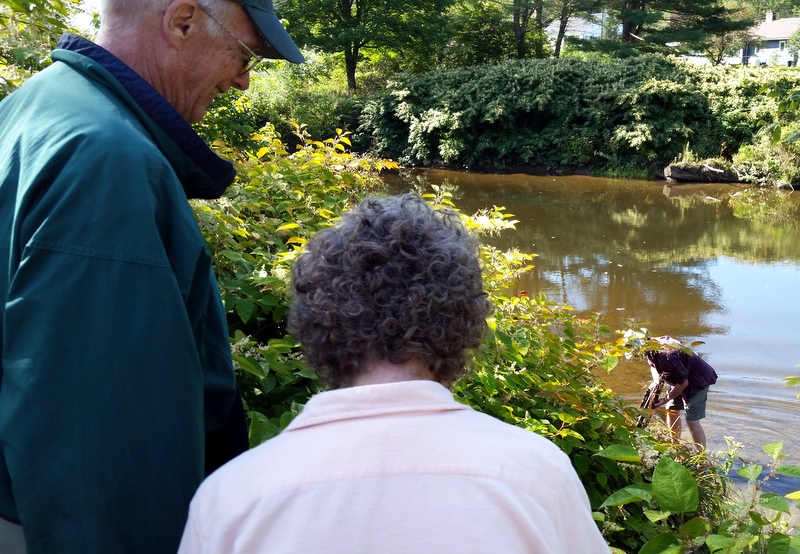On a beautiful late summer Saturday morning, naturalist and gardener at 485 Elm, Ned Swanberg, introduced us to flora, fauna, and the river itself. We heard bird calls, identified native, exotic, and invasive plants, and found connections between our watershed and the wider world.

On the Cummings Street bridge, we were wowed to learn that the North Branch, all of Montpelier, and much more were part of the glacial Lake Vermont (https://en.wikipedia.org/wiki/Lake_Vermont).

That’s Ned in the North Branch, picking up a piece of wood so we can examine river life. The dam at the Lane Shops once generated power for industry. Now it slows the natural flow of the river to the point that this section is wide and slow with no new natural meanders, almost like a lake.







